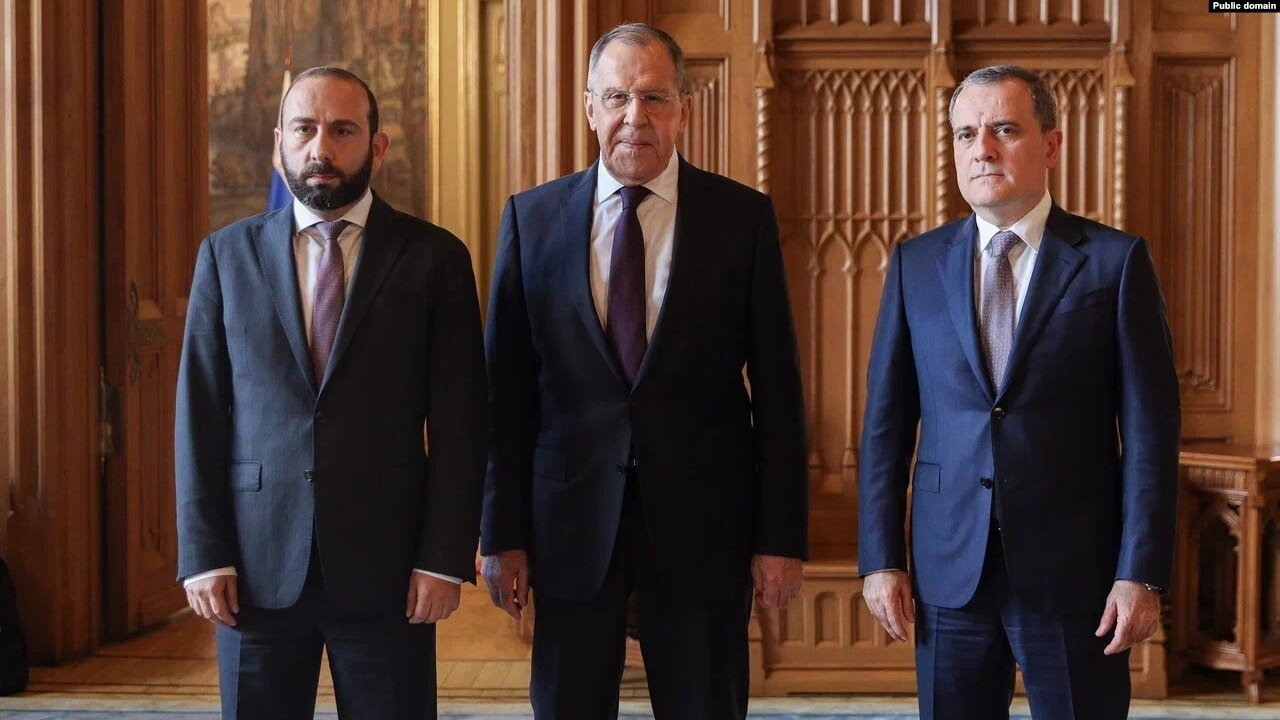YEREVAN (World Report Studio News) - Both Armenian Prime Minister Nikol Pashinyan and Azerbaijani President Ilham Aliyev suggest that a tentative peace treaty could be reached in the next months, ending a decades long dispute in the region.
The conflict between the two countries stems from a disagreement over the status of Artsakh in the Nagorno-Karabakh region, populated mainly by ethnic Armenians and formally belonging to Azerbaijan. Over the last three decades, the conflict has sporadically escalated during offensives that Azerbaijan would hope force Armenia several territorial concessions. These include accepting the annexation of the breakaway territory of Artsakh, as well as secure passage through the Zangezur corridor, which would connect the Azerbaijani exclave of the Nakhchivan Autonomous Republic to the rest of Azerbaijan through the territory of Armenia.
Both Armenia and Azerbaijan announced that they have agreed upon a set of “three main principles” that are necessary in order to reach an agreement. If adhered to, Prime Minister Pashinyan has stressed that the signing of the settlement will be “realistic”.
Azerbaijan's deputy foreign minister, Elnur Mammadov, confirmed that "most points" of the peace agreement had been agreed with Yerevan. Mammadov said that reaching a deal had become "easier" thanks to Azerbaijan's takeover of Nagorno-Karabakh after its September 19-20 lightning offensive.
Azerbaijan agrees upon three principles of the treaty
The first of the principles is the official recognition of each countries territorial integrity, and the promise to respect those territories. According to Pashinyan, the historical areas defining both the Armenian SSR and Azerbaijani SSR found in the last encyclopedias of the USSR would be used as basis for this agreement. This would establish Armenia's territory as covering 29,800 square kilometers, with Azerbaijan's covering 86,600 square kilometers.
According to Pashinyan, the next principle is the establishment of borders as understood in the Almaty declaration, which was signed in 1991 following the dissolution of the Soviet Union and demarcates the borders as they were under the USSR.
"It means starting from the reality that the administrative borders that existed between Armenia and Azerbaijan during the Soviet Union became state borders, and whose inviolability the parties recognized and recognize with the Almaty declaration… The parties have maps that express these realities, and therefore, in the presence of the political will of the parties, this process can also be moved forward quite quickly and effectively."
The third and final principle was the agreement of peace treaty between Armenia and Azerbaijan, where each state is entitled to securing its borders and the movement of persons within them. This includes the implementation of border customs, and securing the roads, highways, and railways within and across borders.
However, although both Armenian and Azerbaijani officials publicly agree upon these three principles, there remains the question on why a peace agreement is yet to be signed? The answer lies in the longstanding issue of securing guarantees for the safety of Armenians in the now occupied Artsakh.
Prior to the Azerbaijani offensive that reclaimed the region, neither side under international mediation could agree to the system under which Armenians would maintain their quality of life. Now that Artsakh has experienced a mass exodus of Armenians, the questions remains whether the refuges will be able to return to their homes and live under the same level of dignity that had before.
Fears of future offensives from Azerbaijan persist
Since the offensive in September took place, multiple scheduled meetings between the Azerbaijani and Armenian leaders have failed to material as both parties disagree on who should mediate the talks.
Azerbaijan officials have rejected EU-led peace talks in Granada, Spain and in Brussels, while Armenia's prime minister failed to participate at a CIS summit in Bishkek where he'd been expected to meet with Azerbaijani President Ilham Aliyev and Russian President Vladimir Putin. This comes as Armenia increasingly looks towards the West for support given Russia's recent track-record of infringing upon the sovereignty of its neighbors.
Even if a peace talks were to be held, the likeliness of any meaningful results materializing from these negotiations is slim.
Given that a peaceful Armenian return to Nagorno-Karabakh is unlikely to occur, the next territory in question is the Zangezur Corridor. Despite assurances from Azerbaijan that the corridor is no longer on their list of territorial demands, fears persist that further offensives are imminent, especially since Putin's Russia has expressed interest in the area. Continuing recent rhetoric from Azerbaijan referencing this region as “Western Azerbaijan” has further fueled these fears.
According to Politico, several members of Congress have been warned by Secretary of State Antony Blinken that Azerbaijan could soon invade mainland Armenia. The Department has since denied these claims.

 Gabriel Madej
Gabriel Madej